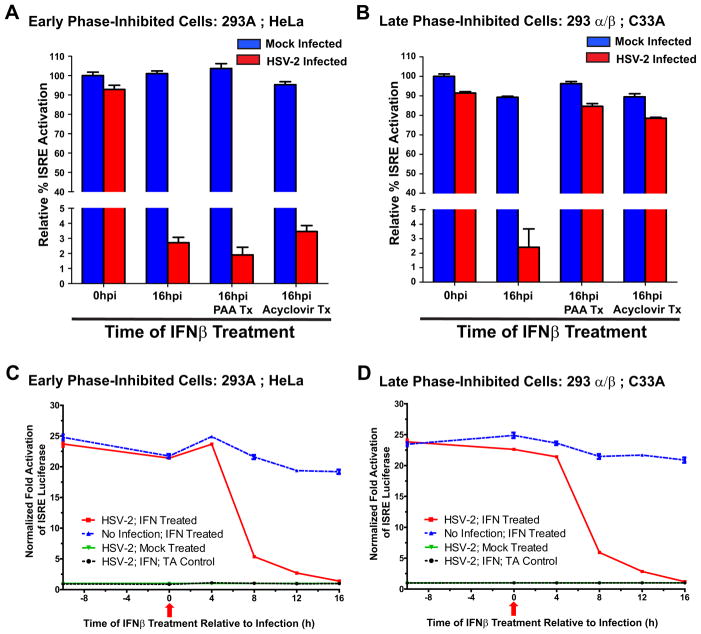Figure 2.
HSV-2 specifies mechanisms that inhibit type-I IFN signaling both early and late in the replicative cycle. (A & B) ISRE promoter-reporter analysis of HSV-2 mediated inhibition of type-I IFN signaling in mock- (blue bars) or HSV-2- (red bars) infected 293A and HeLa (early phase-inhibited) cells (A) or 293α/β and C33A (late phase-inhibited) cells (B). Treatment of various HSV-2 infected cell-lines with the viral DNA replication inhibitors PAA or acyclovir segregates the replicative phase that HSV-2 utilizes to mediate abrogation of IFN signaling. (C & D) Kinetics of HSV-2 inhibition of IFN-mediated activation of the ISRE promoter in early phase-inhibited (C) and late phase-inhibited (D) cells. Red arrow indicates the time of HSV-2 infection (0h) relative to addition of IFNβ at −8, 0, 4, 8, 12, and 16h.

